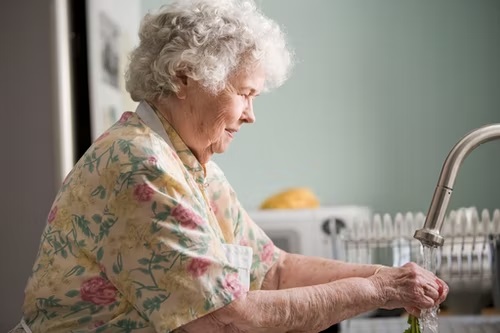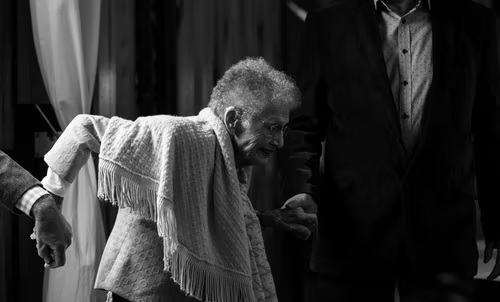Adult incontinence is a common but sometimes misinterpreted medical condition. According to medical sources, millions of Americans, including most women, suffer from it. According to the Urology Care Foundation, urinary incontinence affects a quarter to a third of adults in the United States. Despite the significant frequency of incontinence, there is a lot of misinformation and misunderstanding regarding it. Many people cannot receive effective incontinence therapy or protection due to this.
Innovative techniques, such as disposable bed pads, help incontinent persons live more comfortably, and such products have emerged in the market due to advances in medical care. Adult pull-up diapers are one of the most common incontinence products on the market. Unfortunately, there are some myths about incontinence products, and many persons who would benefit from incontinence protection avoid using them, resulting in a lower quality of life. This guide aims to change that by diving into incontinence and incontinence protection to help those who are suffering from incontinence.
· What Is Incontinence?
The involuntary spilling of urine is known as bladder (or urinary) incontinence, and the leaks could be tiny or substantial. This can happen when you sneeze, laugh, jump, or run. Bladder leaks are a typical occurrence. However, leaks are more common in older adults and women who have recently given birth.
· Forms Of Incontinence

- Urge Incontinence: Urinary leakage that occurs unexpectedly due to spontaneous bladder contraction is called urge incontinence. This condition is also known as an overactive bladder.
- Overflow Incontinence: It occurs when the urinary system prevents a bladder from emptying. It causes urine to trickle continuously.
- Stress Incontinence: When physical pressure is given to the bladder through coughing, sneezing, or exercise, a urine leak occurs.
- Mixed Incontinence: Incontinence due to a combination of stress and urge incontinence.
· Factors That Cause Incontinence
Incontinence can result from anything that reduces a person’s movement, even if it’s as simple as not being able to reach the bathroom in time. Incontinence can be caused by anything that produces irritation in the urinary system:
- Infections
- Interstitial cystitis
- Thinning of the genital tissues due to menopause:
- Stroke, multiple sclerosis, other neurologic impairment
- An enlarged prostate gland
- Certain medications
- Pregnancy
- Gradual weakening of the pelvic floor
- Menopause
· How Can Urinary Incontinence Affect You?

Urinary incontinence has a stigma attached to it, which has led to many people suffering in silence. Incontinent individuals withdraw from their previous active lifestyles, resulting in social and emotional problems. Failure to treat or manage incontinence increases the risk of infection of the skin and urethra.
Another issue related to urine incontinence is low self-esteem, which can lead to a person losing economic and professional chances. As a result, the first line of defense should be incontinence protection, such as adult pull-up diapers.
· Managing Urinary Incontinence
Most people experience anxiety when learning they have urine incontinence, although this isn’t required. Many individuals today live nicely despite this diagnosis; therefore, it is not a death sentence. You can wear pull-up diapers while your ongoing treatment and maintain an active lifestyle without fear.
Adult pull-ups are the greatest incontinence protection if you’ve been living an active lifestyle and wish to keep it up. Such diapers have side tabs you can pull on and off like regular underwear and are easy to use simultaneously. When compared to the bulkier diapers, these are more comfortable to wear.
Adult pull-ups are slim and sleek and easy to change even when traveling. They’re also available in several styles and can handle various levels of incontinence. Furthermore, double-check your size and severity of incontinence when purchasing pull-up briefs to locate the ideal option.
· Debunking Incontinence Myths

Here are a few myths and misconceptions to avoid if you’re dealing with incontinence:
- Incontinence Is A Disease: This is incorrect since incontinence is a sign of a more severe problem. As a result, you should consult a physician for a professional diagnosis.
- It’s Too Late To Do Anything About It: Incontinence can be treated or managed at any age. It all begins with a consultation with your doctor to obtain a diagnosis. Your doctor will advise you on the best incontinence protection for you.
- No Water After Diagnosis: Water is required for the majority of biological functions, and failing to drink enough leads to further health problems.
- Incontinence Is Only For The Elderly: Incontinence affects many younger persons for various causes, including injuries, lifestyle diseases, pregnancy and childbirth difficulties, etc.
- All Incontinence Products Are Inconvenient: Modern medical advancements have introduced thin, high-performance briefs and pads. They’re discreet, comfortable, and have an absorbent core and anti-odor technology. No one will ever guess you’re wearing a diaper like that.
Bottom line
There’s no reason to let incontinence stop you or a loved one from living a wholesome life. You can live a fulfilling life without boundaries if you choose the proper incontinence protection. It’s time to see your doctor if you’re having trouble managing your bladder. This is the first step toward regaining control of your life and conquering the incontinence problem.




